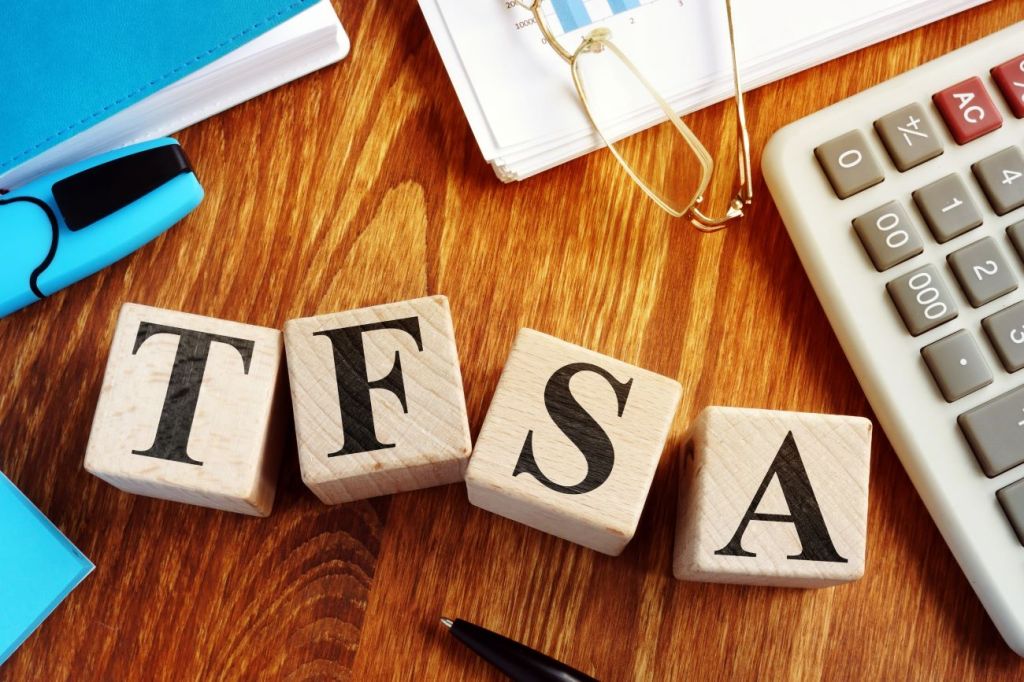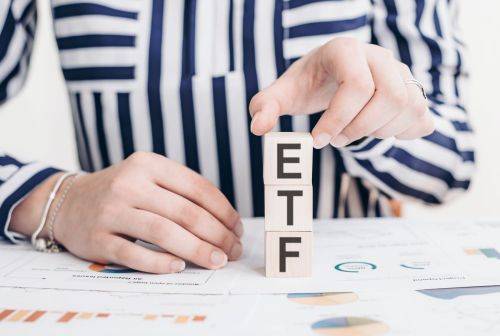Tax-Free Savings Account (TFSA): A Guide for Parents & Teens

If your teen is thinking about investing money for the first time, they may want to look into a tax-free savings account (TFSA). A TFSA is a savings plan that offers them flexibility and long-term gains while also saving them the tax on their earnings. There are some rules and regulations, however, regarding when they can invest and how much money they can deposit. In this guide, we’ll help you teach them everything they need to know about TFSAs.
Key takeaways
- A TFSA is a savings plan that allows Canadians to save and grow money through interest, dividends, and investment returns—all without having to pay tax on any earnings.
- Anyone over the age of 18 (or 19 in some provinces and territories) can open a TFSA in Canada as long as they have a social insurance number (SIN).
- TFSAs can be spread across multiple accounts. You can open a savings account, a mutual fund account, and a brokerage account for buying stocks as long as your total deposits to these accounts don’t exceed your contribution room limit.
- The amount that can be invested in a TFSA (known as contribution room) changes every year. However, if you haven’t reached your lifetime contribution room limit, your total contributions can exceed the annual limit.
- If you do go over your contribution room limit, there is a 1 per cent tax on the excess amount in the month, every month, until contribution room becomes available again.
What is a tax-free savings account (TFSA)?
A TFSA is a special type of account that lets Canadians invest their money, earn more money on those investments, and not pay any taxes on the earnings or the original investment even when withdrawn. A TFSA holder must be over the age of majority, which is either 18 or 19, depending on where you live, and hold a valid Social Insurance Number (SIN).
Because of its complex structure, a TFSA is meant for long-term savings and is closer to a savings plan than a regular savings account. If you start investing as soon as you’re eligible, by the time you’re ready to buy a house, switch careers, or fulfill your lifelong dream of solo-journeying to Antarctica, you should have a nice cushion of funds, thanks to the magic of compound interest and investment returns.
How does a TFSA work?
A TFSA works by letting your money grow long-term without you having to pay a cent in tax on the earnings you make on your deposits. Generally, any interest made from investments is considered taxable income and has to be reported on your tax return. This means you’ll have to pay a small amount in taxes on these earnings—except when they’re housed in a TFSA.
Put another way, a TFSA operates very differently from a regular savings or chequing account, which your teen may already have. The term “tax-free savings account” is actually kind of misleading since most TFSAs aren’t just a single account. A TFSA can be spread out across several different accounts, including investment accounts and mutual funds. (Here’s a glossary of investing terms if you need a refresher.)
Also, unlike with a typical savings account, there are limits to how much money you can contribute to a TFSA. If you win a million dollars from the lottery, for example, you won’t be able to throw it all into a TFSA or else you’ll get dinged with a penalty fee from the Canada Revenue Agency. You’ll only be able to put away a predetermined amount, which depends on whether or not you’ve been contributing to a TFSA since the year you turned 18.
But if you do win the lottery, you’ll definitely want to consider putting at least some of your winnings into a TFSA. While you don’t pay taxes on most lottery winnings in Canada, you do pay tax on any interest earned from those winnings—except interest earned in a TFSA. It’s called “tax-free” for a reason!
What’s TFSA contribution room?
As mentioned earlier, the TFSA program is available to you when you turn 18. Every year, the Canadian government announces a new limit to how much you can contribute to your TFSA. In 2023 the contribution limit is $6,500 but in the recent past, the limit has fluctuated between $5,000 and $10,000. But even though the contribution limit changes each year, you can still make up for unused contribution room. Here’s how: If your teen turned 18 this year, they can only invest $6,500. If your teen turned 18 last year but they didn’t make any contributions—regardless of when they opened their account—they can catch up by investing up to $12,500 today.
And since the TFSA program started in 2009, if you yourself turned 18 that year or anytime prior, your lifetime contribution limit is $88,000 in 2023.

What are the benefits of a TFSA?
There are a number of advantages to storing money in a TFSA. So instead of your teen just throwing their cash into a savings account and calling it a day, explain why they might want to benefit from a TFSA instead:
Their investment is less likely to be impacted by inflation
If your teen had a large sum of money that they kept in a savings account for a long time, it would eventually lose its original value due to inflation. For example, say they put $3,000 in a high-interest savings account yielding 2 per cent interest. While the Bank of Canada aims to keep inflation around 2 per cent (the same as the interest your teen would earn), it’s 4 per cent as of August 2023. That means your teen would be losing money on their initial $3,000 investment as the interest they earn wouldn’t keep up with the rate of inflation.
Read more: The Parent’s Guide to Teaching Kids About Inflation
However, say your teen invested that money in an ETF (exchange-traded fund) through their TFSA with an annual return rate of 10 per cent. By 2024, they would have around $3,630 (assuming the market remains steady). Even if you deduct any management fees, their investment would surpass what they’d earn by keeping this money in a regular savings account.
They won’t be taxed on earnings
The major benefit of a TFSA is that your teen won’t pay taxes (which can really add up!) on their contributions. Also, your teen’s earnings don’t impact their contribution room, so they can continue investing more money within their limit, even if their earnings push their TFSA balance past the contribution room limit.
No penalties for withdrawals
If your kid needs to withdraw money for any reason—say their car breaks down or a pet needs surgery—they won’t be taxed for doing so. They just need to keep in mind that if they withdraw, their contribution room doesn’t reset until the next year. That means they’ll have to wait to re-contribute what they withdrew.
No impact on federal benefits for withdrawals
When we say “no penalties for withdrawals,” we mean it. Your teen can withdraw at any time for whatever reason and they won’t face any tax consequences or be prevented from receiving government benefits.
If they withdraw $600 from their TFSA, it doesn’t count as earned income. That means they won’t need to report it on their taxes and it’ll have no impact on the tax credits or any government benefits they’re eligible for. If someone is receiving employment insurance or Canada workers benefit, for example, they’ll receive the same amount as they would have if they hadn’t withdrawn the funds from their TFSA.
But if your teen withdraws $600 from an investment account outside of their TFSA, such as an RRSP, this amount must be declared on their taxes.

What are the different types of TFSAs?
Because the TFSA program is a savings plan and not a single type of account, your teen has a few options when it comes to where they want to invest their money:
TFSA savings account
If your teen finds investing overwhelming, a TFSA inside a savings account is a very straightforward way to invest in a TFSA. It operates like a regular savings account. But unlike investments that carry a greater risk, their balance will remain steady and not fall victim to market fluctuations. This product is simple and easy to use and still a great place to stash savings for tax-free earnings.
TFSA guaranteed investment certificates
Guaranteed Investment Certificates, or GICs, are agreements that you make with your bank to lock money away for a specified length of time in return for higher interest than you would make on a savings account. Terms usually last between six months and 10 years, and interest rates depend on the term length. If your teen is 100 per cent sure that they’re not going to be using the money for a long time and they don’t want to even think about market trends, a TFSA GIC is typically a safe and easy place to park their savings.
TFSA mutual funds
Mutual funds are a great option for investors who want to see returns but don’t want to do the heavy lifting of choosing stocks and bonds themselves. TFSA mutual funds, like all mutual funds, pool together investments from a large group of investors—mutual investors, if you will—and the money is managed by a fund manager and used to buy different stocks, bonds, cash, and even slices of other mutual funds.
The bigger that pool of cash grows, the more shares can be purchased. Some mutual funds pay out dividends, which means if a fund is doing really well, you get regular payments in cash (which you’d be taxed on, unless your mutual fund is inside a TFSA).
Other mutual funds will reinvest those dividends back into the mutual fund, allowing them to make even more money long-term. One advantage of mutual funds is that they offer diversification, which means your teen can invest in stable and reliable bonds and cash as well as high-risk/high-return stocks.
Another advantage with TFSA mutual funds is there are different products designed to suit different needs and values. If your teen wants a high-risk mutual fund that has the potential for a much bigger payout down the line, or a fossil-fuel-free fund that doesn’t have any holdings in the oil-and-gas sector, they should be able to find it.
The only downside with TFSA mutual funds is they typically come with higher fees than most ETFs or even savings accounts, although the high returns should offset these fees.
TFSA ETFs
ETFs, or exchange-traded funds, are a relatively new type of investment that offer the same ease and diversification of mutual funds, but they work a bit differently. Like TFSA mutual funds, TFSA ETFs let investors pool their money to buy shares in different companies. When an ETF is inside a TFSA, all the growth is tax-free.
Unlike mutual funds, however, there aren’t human fund managers picking the underlying securities to invest in. Instead, ETFs automatically track different sectors on the stock market (they can be by industry, index, or even companies on different stock exchanges) and follow the trend of the overall market.
Because there are no human fund managers actively managing ETF portfolios, the management fees are typically lower than they are with mutual funds—usually less than half a percentage of returns, versus an average of almost 2.5 per cent for mutual funds.
Plus, with so many different ETFs out there, your teen can choose the funds that specifically cater to their interests and values. There are ETFs that only invest in clean-energy companies, social-justice ETFs, and more. And if they don’t want to do the research themselves, they can fill out a profile with a robo-advisor and have it pick for them.

TFSA stocks
If your teen is a budding financier, they could even try investing in stocks from within a TFSA. Stocks are tiny slices of ownership in a company; when you buy a company’s stock, you’re investing directly in that company. Stock prices go up and down day to day, depending on the market as well as supply and demand.
You can earn money from stocks in two ways:
- Some companies will share their revenue with shareholders on a regular basis. These payments are called “dividends.”
- You can wait for the share price to go up and then sell your stock.
A stock exchange is a marketplace specifically for the selling and buying of company stocks—think the Toronto Stock Exchange, the Montreal Exchange, or the NEO Exchange. Teens over the age of 18 can invest in the stock market through a stock broker or online brokerage account and stow their gains in a TFSA, tax-free.
Investing in stocks is generally riskier than investing in mutual funds or ETFs. It takes a lot of research into companies and some trial and error to know what a good share price is and when is a good time to buy. Because of the higher risk, your teen should not invest more than they can afford to lose. Instead, they should balance stocks with something more stable and reliable, like ETFs or a mutual fund.
If they’re still keen on buying stocks within a TFSA, suggest they look for stocks that they can buy and hold for a long time—an enthusiastic trader with higher trade volumes might signal to the Canada Revenue Agency that they’re actually a day trader (which is a job), and they will be taxed as if earning actual business income from that activity.
But there are upsides to investing in stocks as a teen. They can learn about the financial industry at an early age and take bigger risks when the stakes are low (i.e., while living at home). And stocks are awesome for accumulating sweet, sweet compound interest. Any money made from a stock could be reinvested to make bigger and better returns over time.
How old do you have to be to open a TFSA?
In Canada, you have to be the age of majority to open a TFSA. That usually means 18 years old or 19 in B.C., Nova Scotia, New Brunswick, Newfoundland and Labrador, the New Territories, Yukon, and Nunavut. However, in provinces and territories where you can’t open a TFSA until 19, your kid can retroactively invest from the year they turned 18.
Parents can’t open a TFSA on behalf of their child. However, if parents want to give their kids a financial head start, they could open a Registered Education Savings Plan (RESP), which can be used for post-secondary education.
Learn more about how to pay for university or college.
Are TFSAs a good investment for teens?
The earlier your teen can start investing, the better, since compound interest can really help their nest egg. However, they shouldn’t really open a TFSA unless they can commit to not touching their savings for a long time. Here are some pros and cons of investing in a TFSA.
Pros:
- Compound interest can build over time or be reinvested and help their money grow even more.
- Lots of account options mean teens can put some of their money into something stable and reliable and play with stocks and bonds at the same time (all while learning a ton about business and finance!).
- Earnings are tax-free, and so are withdrawals, so TFSAs won’t make doing their own taxes any harder.
Cons:
- A TFSA is not a regular savings account: If your teen withdraws funds, they won’t get that contribution room back until the following year.
- A TFSA won’t help lower their taxable income, unlike an RRSP.
- If they over-contribute, they’ll be dinged with a one per cent penalty by the CRA.
While there are major benefits to starting a TFSA early (namely: more $$$ down the line), sorting through the paperwork, the fine print, and different investment tools can be daunting. Because of how a TFSA is structured, only teens who are serious about saving and have the funds to do so should consider opening one. But even if they don’t have funds right now, it’s good for them to understand this investment option for when they’re older.
TFSAs can offer a lot of educational benefits on top of financial ones. Whether your age-of-majority teen is ready to open a TFSA or not, the earlier they learn about financial literacy and how money works, the better. In the meantime, the Mydoh app is here to help kids learn about money through real-life saving and spending, preparing them for their future.
Download Mydoh and help build the foundation of financial literacy for your kids and teenagers.
This article offers general information only and is not intended as legal, financial or other professional advice. A professional advisor should be consulted regarding your specific situation. While the information presented is believed to be factual and current, its accuracy is not guaranteed and it should not be regarded as a complete analysis of the subjects discussed. All expressions of opinion reflect the judgment of the author(s) as of the date of publication and are subject to change. No endorsement of any third parties or their advice, opinions, information, products or services is expressly given or implied by Royal Bank of Canada or its affiliates.














